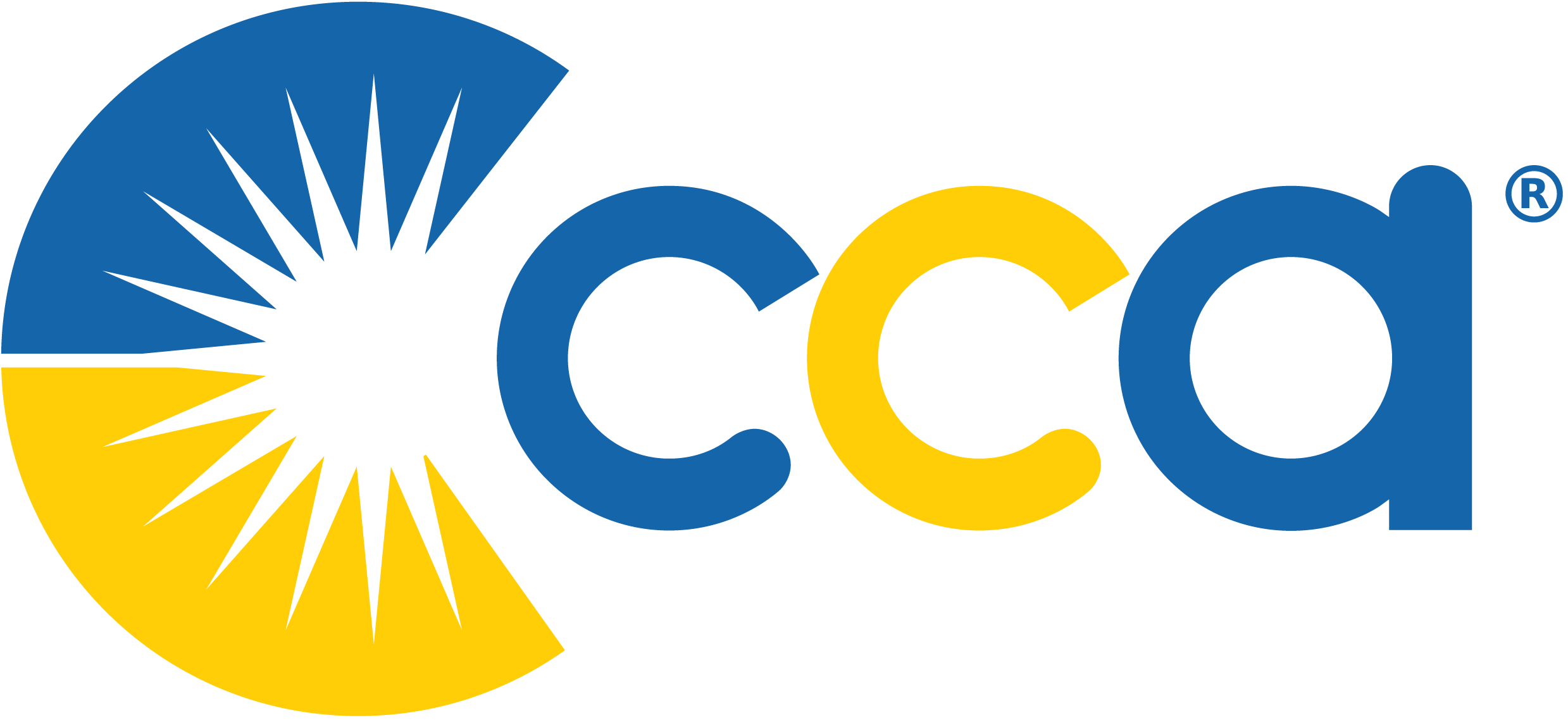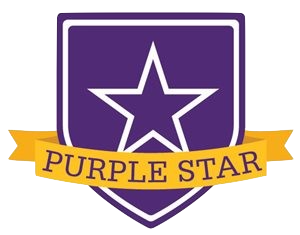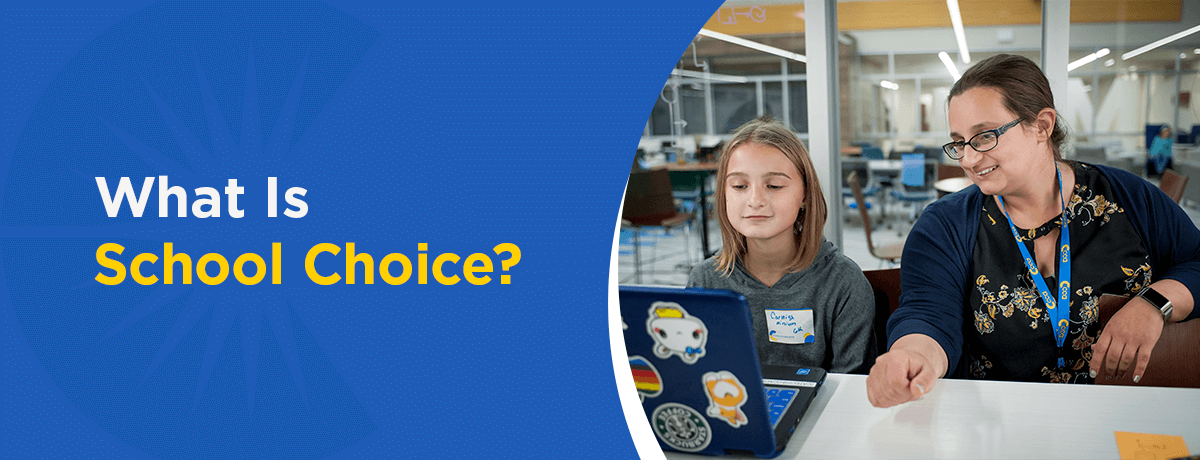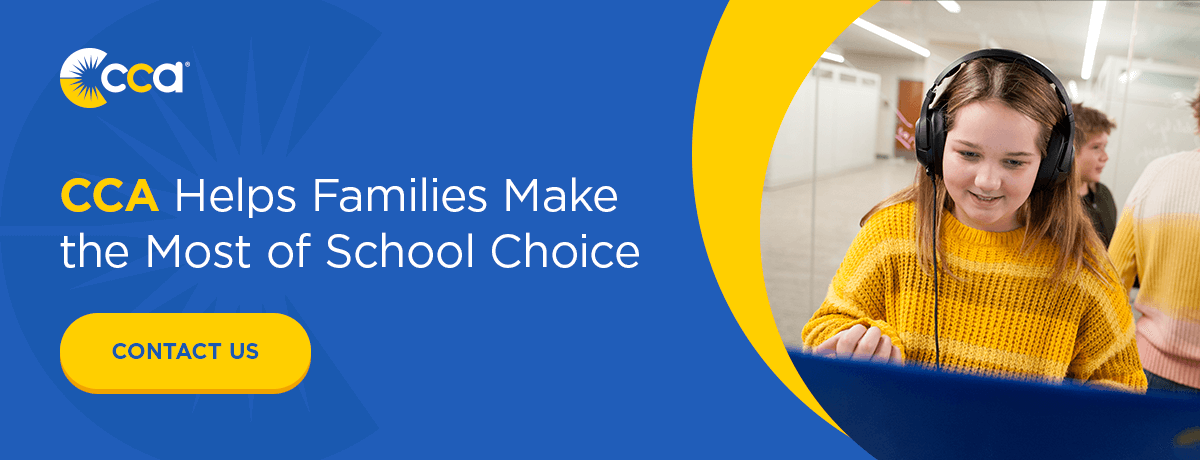By basic definition, school choice is a policy that allows parents to send their children to an approved education provider of their choice for their education by utilizing the public education dollars allocated for each student.
The term represents diverse and ever-evolving ways students can access their K-12 education. Whether it be a private school or a traditional, charter, or cyber public school, school choice empowers families to find the right educational setting for their students. Students from various backgrounds and needs can obtain tuition to attend a private or a public school with tax credit scholarships, vouchers, tuition tax credits, and other programs.
Every child deserves a stimulating, successful education that meets their skills and interests. School choice gives every student an opportunity by enabling families to select the K-12 alternatives that best meet their children’s educational needs.
About School Choice
Although the system has been around for nearly 150 years, in 1991, Wisconsin became the first state to create the voucher program for schools, and Minnesota became the first state to create a law allowing charter schools. However, in 1995, Milton Friedman advocated School Choice to enhance the public school system in the United States by using free-market concepts.
Following these changes, National School Choice Week was credited in 2011. It takes place annually in January to include an array of independently planned awareness events, such as talent shows, school fairs, and more. It’s a charitable, nonprofit effort to raise awareness of K-12 education programs available for children. School Choice partners with thousands of virtual school groups, organizations, and schools to raise awareness of school choice and its importance in education.
Types of School Choice
Based on their funding, schools of choice are divided into public and private groups. The local, state, and federal governments share public school funding. Private schools get their money from other sources. Let’s take a look at the various alternative school choice types.
Traditional Public School
Public schools are run and funded by local, state, and federal governments. Specific requirements, such as curriculum, governance, and rules, bind them.
Magnet School
Magnet schools, also known as theme-based schools, are free public schools of choice that attract students from various backgrounds by employing innovative learning methodologies centered on specific subjects. This sort of schooling option is funded by local districts and extends beyond school districts.
Charter School
The National Alliance of Public Charter Schools mentioned charter schools are public schools run by for-profit or nonprofit groups that operate outside of the public education system. Even though these schools are publicly financed, they are free from hiring and curricular standards imposed by state and local boards.
Charter schools, like public schools, do not charge tuition fees or have admittance restrictions. Typically, students are admitted by a lottery system once the number of spaces available has been exceeded.
Homeschooling
Educating children at home is an alternative to sending children to established institutions. To improve their homeschooling experience, many families prefer to interact through tutorials, extracurricular leagues, and cooperatives.
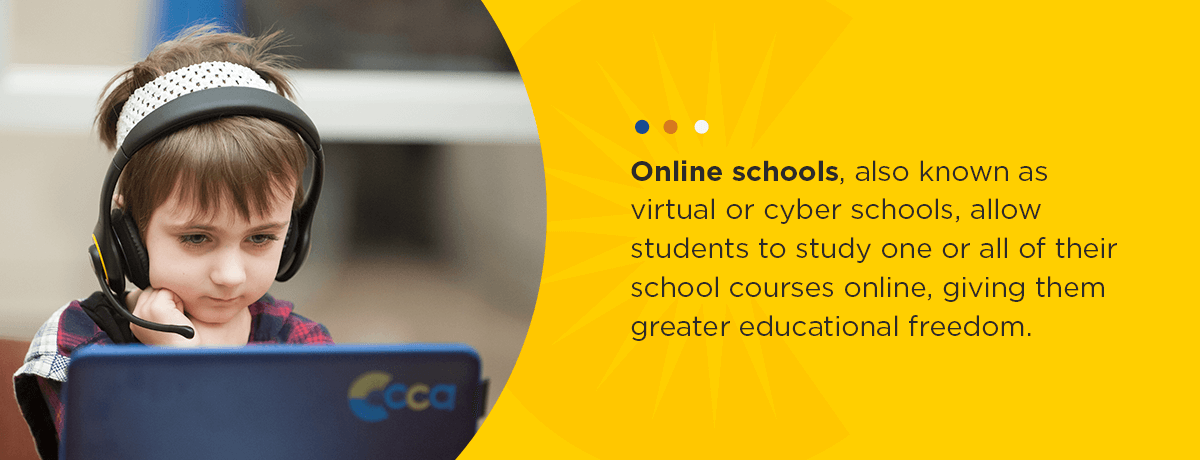
Online School
Online schools, also known as virtual or cyber schools, allow students to study one or all of their school courses online, giving them greater educational freedom. These schools typically follow similar teacher credentialing, evaluation, and administration procedures as regular public schools.
Private School
Nonprofit and private organizations run private schools. Tuition, donations, and private grants are often used to support these institutions. Different curriculum normalities apply to these schools.
School Choice Assistance
With school choice assistance, families can use public funding to attend the schools or get services that best meet their child’s needs. There are multiple school choice assisted programs to choose from, including:
- Voucher Programs: Parents get a share of the public education funding allotted to their child through voucher programs. This allows families to use those funds to send their children to a school of their choice — providing them with financial autonomy.
- Scholarship Tax Credits: Tax credit scholarship programs assist individuals and corporations with lowering their tax burden by donating to organizations that help families pay for their school funding.
- Education Saving Accounts (ESAs): Several states offer ESAs, which take a child’s state education dollars to create an individual education account. Parents can subsequently use this money to pay for tuition, textbooks, and other educational expenditures.
- Personal Tax Credits and Deductions: Some states provide parental school choice through Personal Tax Credits and Deductions, which allow families to aggregate deductions to help pay for educational expenses. Textbooks, tutoring, computers, and other fees may be covered.
Each of these programs has been around for a different length of time. For instance, the state of Arizona was the first to launch an ESA program in 2019, benefiting 6,400 students, including around 3,700 children with special education needs. Every program has a wide reach that can impact multiple students in every state.
The Future of School Choice
Skeptics believe that using public monies to promote choice undermines the existing public school system. Some believe that it’s aimed at privatizing the country’s most essential civic institutions, which have educated the vast majority of students in the United States. According to a Manhattan Institute poll, 46-52% of voters agree that allowing parents to pick their children’s school improves the overall quality of K-12 education.
Even with the tremendous support for school choice, many programs, such as vouchers, have been struck down in state courts. In 2015, the Colorado Supreme Court struck down the voucher program and deemed it unconstitutional, as it could allow public funds to flow to religious schools.
However, many see the goal of school choice programs as to provide parents with more control and opportunity for their child’s education.
CCA Helps Families Make the Most of School Choice
At Commonwealth Charter Academy, we recognize each child’s distinct educational requirements and offer various learning options in the classroom. We aim to address any questions or concerns families may have regarding our Pennsylvania K-12 cyber charter school program.
Through online education, students may learn at their own pace, which is convenient for them and their families. Students who want further support from a teacher or certified professional with advanced instruction may easily acquire it.
At CCA, we’re committed to providing a vibrant learning environment for students across Pennsylvania. Contact us today to learn more about School Choice and how CCA can help support your family through online learning.
